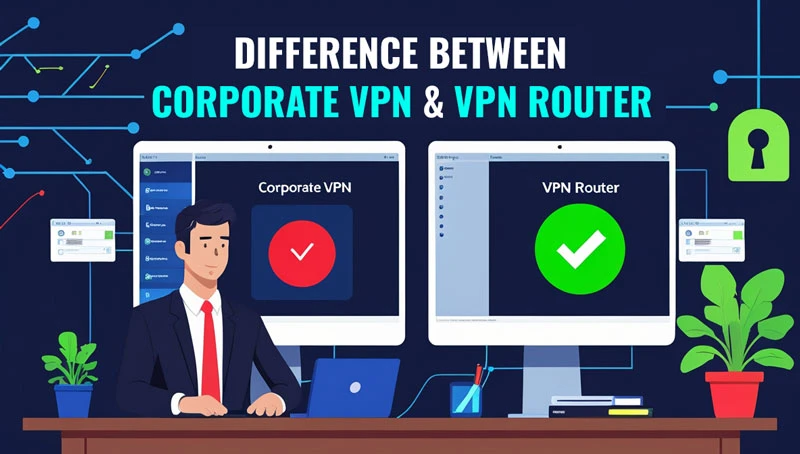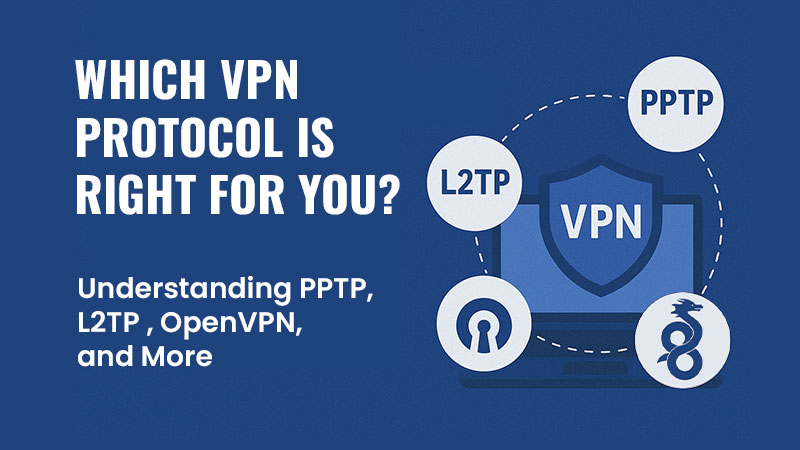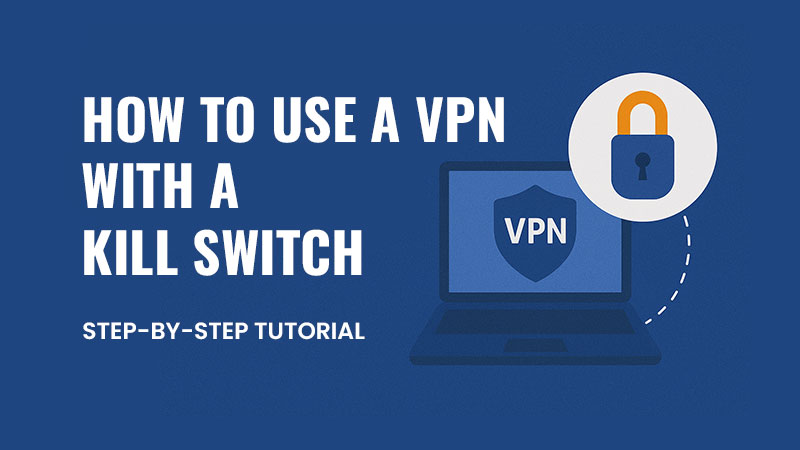The Difference between corporate VPN & VPN router lies in their scope and implementation. A corporate VPN is a software-based solution that provides secure remote access to a company’s internal network for individual users. In contrast, a VPN router is a hardware device that routes all network traffic through a VPN, securing multiple devices simultaneously without requiring separate installations.
Table of Contents
ToggleTraditional internet setups often fall short in meeting the high standards of security and availability that modern businesses require. This is where enterprise-grade solutions like corporate VPNs and VPN routers come into play. These tools provide encrypted tunnels and centralized access control, helping businesses maintain operational continuity, safeguard sensitive data, and support employees regardless of their location.
In this guide, we’ll explore how corporate VPN and VPN router setups function, the difference between Corporate VPN & VPN router, common reasons for connection failures, and how to troubleshoot and prevent them effectively. Whether you’re configuring a VPN setup on iPhone or searching for the best VPN for corporate use, we’ve got you covered.
What Is a Corporate VPN?
A Corporate VPN (Virtual Private Network) is a secure, encrypted communication tunnel between remote employees and an organization’s internal network. It is typically managed by the company’s IT department and used to provide employees, contractors, or partners with secure access to company systems, applications, and data regardless of their physical location. Unlike consumer VPNs, which are often used for privacy or streaming content, corporate VPNs are designed to ensure business continuity, protect sensitive data, and maintain control over who can access company resources.
When a user connects through a corporate VPN, their data is encrypted before it travels across the public internet. This encryption prevents unauthorized users or ISPs from intercepting or viewing the transmitted information. In addition, corporate VPNs often integrate with user authentication systems like Active Directory or Single Sign-On (SSO), allowing businesses to enforce strict access control policies.
Key benefits include:
- Secure remote access VPN to internal systems
- Protection against data leaks
- Compliance with privacy regulations (e.g., GDPR, HIPAA)
- Improved network monitoring and control

- 9.8
- The fastest and most reliable VPN on the market

- 9.5
- Low-cost VPN offering unrestricted device usage

- 8.2
- Affordable new VPN launched by top industry professionals
What Is a VPN Router?
VPN Routers channel all your network traffic through a VPN, offering streamlined setup and full-device protection. Unlike software-based VPN clients that need to be installed on each individual device—such as laptops, smartphones, or tablets—a VPN router provides network-wide encryption, securing every device connected to it without the need for additional software.
This makes VPN routers ideal for corporate environments, home offices, and remote teams where security and simplicity are top priorities. Configured VPN routers auto-connect at startup, delivering uninterrupted VPN protection for your whole network. This setup not only enhances data privacy and security but also simplifies management for IT departments by centralizing control and reducing device-specific configuration.
VPN routers are particularly useful in securing smart devices and IoT products that do not natively support VPN apps, such as smart TVs, printers, or voice assistants. They also support various VPN protocols like OpenVPN, IKEv2, and WireGuard, offering flexibility and compatibility with different corporate VPN services.
Additionally, businesses can configure VPN routers with advanced features such as kill switches, dual VPN, load balancing, and multi-WAN failover, further boosting security and connection reliability.
Advantages of VPN routers:
- Protects all devices in a network (including IoT)
- Always-on VPN connectivity
- Centralized management for IT teams
- No installation required on individual devices.
Why is my VPN not connecting on my Android
If you’re facing issues with your VPN not connecting on your Android device, it could be due to incorrect settings, outdated apps, network restrictions, or server issues. Understanding why your VPN is not connecting on Android helps in quickly resolving the problem and restoring secure access to your online services.
In this section, we break down the most common types of VPN connection failures, identify their root causes, and outline effective strategies for troubleshooting VPN problems across corporate environments.
Authentication Errors
Cause: Incorrect credentials, expired certificates, or misconfigured authentication settings are among the most common causes of VPN connection failures. Such issues typically occur due to outdated or incorrect login details, or configuration mismatches that prevent the VPN client from communicating with the authentication server.
Authentication systems like Active Directory or LDAP are often integrated into corporate VPN solutions, and any disruption in communication between the VPN client and these systems can result in failed login attempts. Furthermore, discrepancies in device clocks can invalidate authentication tokens or certificates, especially in systems that rely on time-sensitive protocols.
Solution:
- Confirm that the username and password are correctly entered and align with the system’s stored credentials.
- Ensure digital certificates are not expired and are correctly installed on both client and server sides
- Synchronize the device’s date and time settings with an accurate NTP (Network Time Protocol) server to avoid token expiration issues
- If using multi-factor authentication (MFA), confirm that the correct verification code or security token is being entered
- Contact the IT department to reset credentials or reissue certificates if access remains blocked
VPN Tunnel Drops Frequently
Cause: Frequent VPN tunnel drops are typically caused by unstable or weak internet connections, server overload, outdated router firmware, or device sleep settings interrupting network activity. When the VPN tunnel drops, the encrypted connection is lost, and users may be disconnected from critical company resources or experience lapses in security.
High latency, bandwidth congestion, or fluctuating Wi-Fi signals—especially in shared or public networks—can disrupt the VPN tunnel’s stability. Similarly, if the corporate VPN server is overloaded or experiencing downtime, it may intermittently cut off user connections. Devices entering sleep mode can also interrupt VPN sessions, particularly on mobile setups like VPN setup on iPhone.
Solution:
- Want fewer dropouts? Plug in with Ethernet instead of Wi-Fi for a smoother, more stable connection.
- Update your VPN router firmware to the latest version to patch known bugs and enhance performance
- A quick reboot of your router and VPN client can help clear up system glitches and get everything running smoothly again.
- Select a different, less crowded VPN server location with lower latency
- Adjust device sleep or power-saving settings to prevent interruptions during idle periods
- Contact IT to assess server load and consider implementing server load balancing for high-traffic networks
Incompatible VPN Protocols
Cause: VPN protocols are encryption standards that ensure secure data transmission between your device and a VPN server. Popular examples include OpenVPN, IKEv2, L2TP/IPSec, and WireGuard. However, not all devices or VPN routers support every protocol. Incompatibility can arise if the VPN client is configured to use a protocol that the router or server doesn’t recognize, resulting in failed or unstable connections.
This issue is especially common in corporate settings where legacy infrastructure may not support modern protocols, or where newer devices use protocols that haven’t been enabled on the server side. Additionally, some firewalls or network environments may block traffic associated with certain VPN protocols.
Solution:
- Verify which VPN protocols are supported by your VPN router and ensure the selected one is enabled on both client and server
- Switch to a widely supported and secure protocol like OpenVPN or IKEv2 if compatibility issues arise
- Update firmware or VPN software on both client and router to ensure the latest protocol support
- Avoid using deprecated or less secure protocols like PPTP unless absolutely necessary and only for legacy systems
- Consult your VPN provider’s documentation or IT department to determine the most compatible and secure configuration for your environment
Firewall or NAT Conflicts
Cause: Firewalls and Network Address Translation (NAT) devices are designed to manage and restrict incoming and outgoing network traffic for security reasons. However, they can inadvertently block VPN-related traffic if not configured properly. This is particularly problematic in corporate environments where strict firewall rules may block UDP or TCP ports used by VPN protocols such as OpenVPN or IKEv2.
Additionally, NAT can interfere with VPN tunnels by altering packet headers in a way that disrupts encryption or endpoint recognition. If NAT traversal (NAT-T) is not supported or enabled, VPN traffic may fail to pass through routers and firewalls effectively, leading to dropped connections or failed handshakes.
Solution:
- Configure your firewall to explicitly allow VPN-related ports (e.g., UDP 500 and 4500 for IPsec, TCP/UDP 1194 for OpenVPN)
- Enable NAT Traversal (NAT-T) in the VPN settings to facilitate traffic through NAT devices
- Use port forwarding to direct VPN traffic to the internal IP address of your VPN router or server
- Consider implementing split tunneling to route only specific traffic through the VPN, reducing firewall interference
- Work with your IT team to whitelist trusted VPN gateways and ensure compliance with corporate security policies
- Check for double NAT issues in complex network setups, especially in home or hybrid environments, and reconfigure routers if necessary
DNS Resolution Issues
Cause: DNS (Domain Name System) resolution issues occur when your device is unable to correctly translate domain names (like company.com) into IP addresses while connected to a VPN. These problems can arise due to VPN misconfigurations, DNS leaks, or conflicts between local and remote DNS servers. When DNS queries bypass the VPN tunnel, they can expose user activity to third parties and result in websites failing to load or resolving incorrectly.
A DNS leak compromises privacy and security, especially in corporate environments where sensitive data is transmitted. It often happens when the device continues to use default DNS servers from an internet service provider (ISP) rather than those provided by the VPN, even after the VPN is connected. This misrouting can disrupt secure communications and increase vulnerability to man-in-the-middle (MITM) attacks.
Solution:
- Configure your VPN client or VPN router to use custom, reliable DNS servers such as Google DNS (8.8.8.8, 8.8.4.4) or Cloudflare (1.1.1.1)
- Enable DNS leak protection features available in most modern VPN software to ensure all DNS traffic is routed through the encrypted tunnel
- Manually set DNS settings on the device to match those used by your corporate VPN
- Flush your device’s DNS cache to clear outdated or conflicting DNS records (e.g., using ipconfig /flushdns on Windows or sudo dscacheutil -flushcache; sudo killall -HUP mDNSResponder on macOS)
- For mobile users, especially during VPN setup on iPhone, ensure that DNS settings are manually configured or enforced via mobile device management (MDM) policies
Imortant Strategies to Avoid VPN Downtime
To maintain seamless remote access and business continuity, it’s important to implement important strategies to avoid VPN downtime. These include using reliable VPN providers, regular software updates, load balancing, and monitoring tools to ensure high availability and minimal disruptions.
- Use enterprise-grade VPN routers with automatic failover and dual-WAN support
- Regularly update VPN client software and router firmware
- Monitor VPN usage and logs to detect anomalies early
- Implement redundancy with secondary VPN servers or backup ISPs
- Train employees on basic VPN usage and troubleshooting VPN issues
- Follow guides for VPN setup on iPhone or other devices to ensure proper configuration
A well-structured corporate VPN and VPN router system is no longer optional—it’s a necessity for any business that values data security, operational efficiency, and flexibility in the modern remote work landscape. From enabling remote access VPN for employees around the world to providing enterprise-level protection through centralized VPN routers, these tools help maintain confidentiality and continuity.
However, even the best setups can encounter issues. Understanding common causes of VPN connection failures—such as authentication errors, DNS leaks, or firewall conflicts—equips IT teams and users with the knowledge needed to troubleshoot quickly and effectively. By combining smart protocol configurations, proactive monitoring, and employee training, businesses can greatly reduce disruptions.
Adopting the best VPN for corporate use and investing in reliable VPN routers ensures scalability, compliance, and long-term resilience. Whether you’re supporting a mobile workforce, securing remote offices, or setting up a VPN on iPhone for on-the-go access, a thoughtful approach to VPN implementation strengthens your entire digital ecosystem.
In conclusion, prioritize robust VPN infrastructure as a strategic asset—not just a security measure. It helps your team thrive while keeping your company’s valuable information safe and secure.
Frequently Asked Questions (FAQ)
What is the difference between a corporate VPN and a regular VPN?
A corporate VPN is managed by a business to securely connect employees to internal systems, while a regular VPN is typically used by individuals to access geo-restricted content or maintain privacy online.
Is it possible to configure a VPN on an iPhone for work-related use?
Yes. Most corporate VPNs offer mobile apps or manual configuration options for iPhone. To enhance security, organizations commonly apply configuration settings through Mobile Device Management (MDM) systems.
Which VPN protocol is most suitable for corporate environments?
OpenVPN and IKEv2 are widely used for corporate VPNs due to their strong security and compatibility. WireGuard is a modern VPN protocol known for its high-speed performance and efficiency.
Why does my VPN keep disconnecting?
This could be due to poor internet connection, server overload, incorrect protocol settings, or device power-saving features. Check the network and device configurations.
How do I prevent DNS leaks in my VPN setup?
Use trusted DNS providers, enable DNS leak protection, and verify DNS settings are correctly routed through the VPN tunnel.




